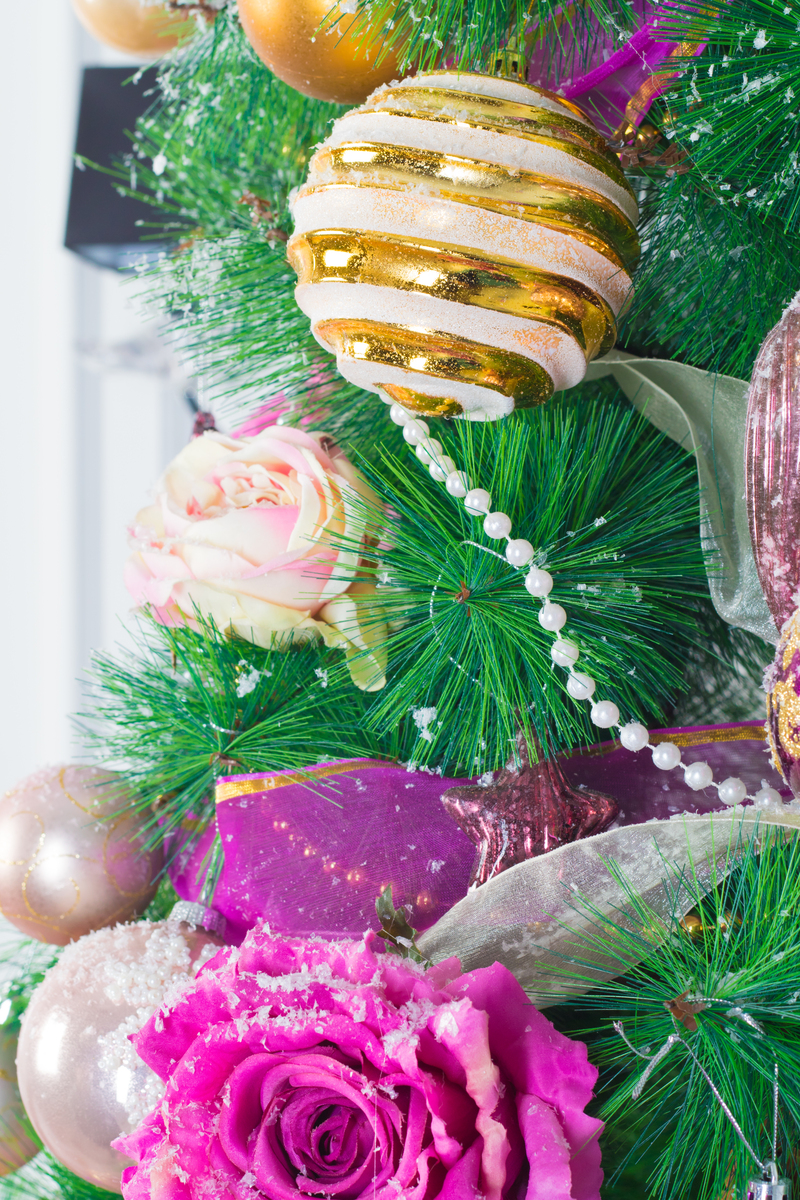Embrace the Wisdom of Birth Month Bloom Traditions
Posted on 02/07/2025
Embrace the Wisdom of Birth Month Bloom Traditions: Exploring the Meaning and Beauty of Floral Celebrations
For centuries, people across cultures have found profound significance in birth month bloom traditions. Whether given as tokens of affection, woven into jewelry, or used as symbols in literature, the flowers of the month express unique qualities, wishes, and stories. As the world becomes ever more fast-paced, taking time to embrace the wisdom of birth month bloom traditions offers us an opportunity to reconnect with nature, history, and ourselves.

What Are Birth Month Blooms? A Timeless Custom Explained
Birth month blooms, or monthly birth flowers, are specific flowers that represent each month of the year. Much like birthstones, these flowers are believed to embody qualities, virtues, and sentiments associated with people born in that month. The concept dates back to ancient Roman and Victorian times, with lists evolving through history and across geographical locations.
- Historical roots: The tradition originated in ancient Rome and grew in popularity during the Victorian era.
- Symbolic meaning: Each flower is linked to particular virtues.
- Personal connection: Monthly flowers make thoughtful gifts that communicate personalized messages.
_**Embracing the birth month bloom tradition connects us to age-old wisdom, natural cycles, and the stories that flowers quietly share.**_
The Complete Guide to Birth Month Flowers: Unveiling Their Meanings and Stories
Below is a comprehensive look at the most commonly recognized birth month blooms in the Western world. Dive into the symbolic depth and beautiful diversity each brings.
January: Carnation & Snowdrop - Strength and Hope
- Carnation: Known for its ruffled beauty, the carnation symbolizes devotion, love, and fascination. It's ideal for celebrating new beginnings in the heart of winter.
- Snowdrop: A delicate white flower, snowdrop stands for hope and rebirth, pushing through the frost as a harbinger of spring.
February: Violet & Primrose - Faithfulness and Young Love
- Violet: This petite blossom is a symbol of loyalty, humility, and admiration.
- Primrose: Represents youth and everlasting affection, making it a perfect emblem for bonds that endure.
March: Daffodil - Renewal and Prosperity
- Daffodil: Bright and cheerful, daffodils herald the start of spring. They symbolize rebirth, new opportunities, and vibrant energy.
April: Daisy & Sweet Pea - Innocence and Bliss
- Daisy: With its simple beauty, the daisy stands for purity, innocence, and loyal love.
- Sweet Pea: This fragrant bloom communicates gratitude and a gentle goodbye.
May: Lily of the Valley & Hawthorn - Happiness and Protection
- Lily of the Valley: Small, bell-shaped flowers signifying happiness, sweetness, and humility.
- Hawthorn: An ancient symbol of hope, protection, and spring's optimism.
June: Rose & Honeysuckle - Love and Devotion
- Rose: Perhaps the most famous flower, the rose embodies passionate love, admiration, and honor.
- Honeysuckle: This sweetly scented flower represents lasting bonds of love.
July: Larkspur & Water Lily - Dignity and Enlightenment
- Larkspur: Delicate and colorful, larkspur celebrates grace, dignity, and an open heart.
- Water Lily: Symbolizes peace, enlightenment, and purity, floating serenely on summer ponds.
August: Gladiolus & Poppy - Strength and Imagination
- Gladiolus: Tall, striking flowers speaking of moral integrity, strength, and infatuation.
- Poppy: With its vivid colors, the poppy suggests remembrance and imaginative dreams.
September: Aster & Morning Glory - Wisdom and Affection
- Aster: A symbol of wisdom and powerful love, asters star in late-summer gardens.
- Morning Glory: Known for rapid blooms and fades, representing enduring affection and renewal.
October: Marigold & Cosmos - Creativity and Peace
- Marigold: Bright, bold blooms express warmth, creativity, and remembrance.
- Cosmos: Stands for harmony, order, and a peaceful spirit.
November: Chrysanthemum - Loyalty and Joy
- Chrysanthemum: Flourishing just as many flowers fade, chrysanthemums symbolize joy, longevity, and loyal friendship.
December: Narcissus & Holly - Hope and Festivity
- Narcissus: Brings hope and good wishes during the winter's dark days.
- Holly: A classic evergreen, holly is a beacon of joy and protection in holiday celebrations.
Comparing Birth Month Blooms to Other Birth Symbols
While birthstones and zodiac signs are familiar, embracing birth month bloom traditions provides a fresh and nature-inspired way to celebrate one's singularity. Unlike stones and stars, flowers change with the seasons, carrying subtle yet powerful messages about life's cycles and transformations.
- Personalization: Selecting a birth flower can add extra depth to a birthday bouquet or keepsake.
- Narrative: Flowers connect deeply with stories - their seasonal bloom times, ancient myths, and local folklore.
- Accessibility: Gardens, parks, and wild places offer living reminders of our birth month's bloom, grounding us in the moment.
Modern Ways to Embrace Birth Month Bloom Traditions
Today's world provides countless creative opportunities to embrace the wisdom of birth month bloom traditions. Let these ideas inspire you:
- Personalized Gifts: Jewelry, stationery, or artwork featuring birth month flowers make thoughtful, unique presents.
- Home Decor: Incorporate your bloom into your living space with fresh bouquets, dried arrangements, or botanical prints.
- Gardening: Plant your birth flower in your garden or on a balcony to watch it grow as a living symbol of your personal qualities.
- Celebrations & Rituals: Integrate your bloom into birthday rituals, meditation spaces, or commemorate special anniversaries.
- Learning & Teaching: Share stories, myths, and art connected to birth month blooms with friends, family, or students.
DIY Project: A Birth Month Flower Journal
- Step 1: Research your bloom. Note its appearance, myths, and cultural meanings.
- Step 2: Collect photos, press petals, or sketch your flower.
- Step 3: Write personal reflections, memories, and birthday wishes inspired by your flower.
This practice deepens your appreciation for your symbolic bloom, turning tradition into personal empowerment.
Global Perspectives: Birth Month Blooms Around the World
While this article focuses on traditions popular in Western cultures, the wisdom of birth month flowers is found worldwide. Japanese hanakotoba, for example, uses flowers to convey unspoken feelings, while many Indigenous cultures associate blooms with natural cycles, spiritual protection, or clan identity. Embracing these cross-cultural practices enriches our understanding and respect for nature's symbolism.
- Japanese Hanakotoba: Each flower carries a secret message, shaping social gestures and poetry.
- Hindu Festivals: Certain blooms are reserved for specific deities and rites according to the birth month.
- Indigenous Wisdom: Native American tribes use local flowers as clan totems or seasonal markers.
_**Learning about global traditions adds layers of meaning and broadens our horizons, helping us fully embrace the wisdom of birth month blooms.**_
The Healing Power of Birth Month Blooms
Flower remedies and floriography (the language of flowers) remind us that our birth month blossoms are more than symbolic. Whether you sip chamomile tea or admire the roses in your garden, these blooms foster well-being, offering mental and physical restoration.
- Stress Relief: Surrounding yourself with flowers has proven mood-boosting effects.
- Holistic Healing: Many birth flowers have historically been used in herbal remedies for healing or spiritual protection.
- Emotional Expression: Gifting someone their birth month bloom communicates understanding and support without words.
Birth Month Bloom Traditions in Art and Literature
Throughout history, the flowers of the months have appeared in poetry, painting, and storytelling. Victorian novels hinted at secret love with violets, while medieval manuscripts illuminated the calendar with vivid blooms. Artists like Georgia O'Keeffe found endless inspiration in the sensuality and symbolism of flowers.
- Symbolic Storytelling: Authors like Shakespeare used roses and daisies to reveal characters' virtue or fate.
- Decorative Motifs: Birth flowers appear in tapestries, jewelry, and historic architecture, infusing spaces with natural magic.
- Contemporary Connection: Modern authors revisit birth month blooms to explore themes of identity, growth, and connection.

The Lasting Appeal: Why We Should Embrace Birth Month Bloom Traditions Today
In our digital, fast-paced age, embracing the wisdom of birth month bloom traditions helps us slow down and savor life's natural cycles. These flowers teach us about patience, continual renewal, and the beauty of being rooted in the present.
- Connection: Birth month blooms foster a sense of connection to both our ancestors and future generations.
- Mindfulness: Observing flowers prompts mindfulness, gratitude, and emotional well-being.
- Personalization: As customizable symbols, they allow us to make each celebration or milestone unique and meaningful.
How to Integrate Birth Month Flower Traditions in Everyday Life
- Celebrate birthdays, anniversaries, and milestones with symbolic bouquets.
- Craft handmade cards, candles, or jewelry featuring your birth bloom.
- Teach children about flower symbolism, planting, and environmental stewardship.
- Journal or meditate on the virtues of your birth flower during significant life phases.
Conclusion: Embrace the Wisdom of Birth Month Bloom Traditions and Let Your Story Blossom
Birth month blooms offer more than fleeting bouquets - they carry timeless lessons, emotional healing, and connections across generations and cultures.
By weaving these floral traditions into our modern lives, we honor the wisdom of the past while nurturing a deeper sense of self and community. Let your unique flower inspire your celebrations, self-discovery, and growth every month of the year.
Embrace the timeless beauty and meaning of your birth month blossom. Let it remind you of your potential, your connections, and your story's perpetual unfolding.
Latest Posts
Enchant Your Valentine with the Top 5 Flowers of the Season
Achieve Stylish Interiors with the 10 Best Easy-Care Office Plants
Embrace the Wisdom of Birth Month Bloom Traditions





